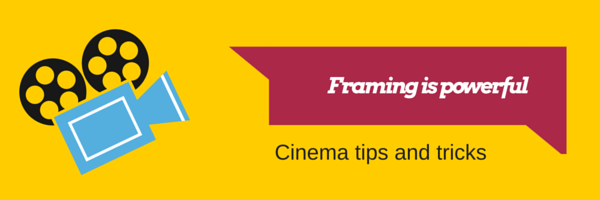
Storytelling depends on framing
Movie making tools are now commonplace and fueling the democratization of cinema production. Added to this revolution is the growth in homemade movies geared towards the YouTube generation. The principle of fixing it in POST is a common dilemma plaguing new filmmakers because of their inability to use the camera to "tell the story" and are quick to dismiss proven storytelling techniques.
The camera in cinema is a powerful tool and pointing this device towards a scene in the "wrong way" will carry a different mood and language. No where in the cinematic recording process is this more evident than in the practice of framing a shot; to express a mood.
Framing will make or break a movie's ability to nail a scene. This language is best understood and fluently "spoken" by cinematographers. DOPs are able to turn any scene into a masterpiece. Allowing specific amounts of light to bounce of an actor's face while slowly moving the camera up close is enough to capture and establish a shot. Be it anger, arrogance or the defining moment in the movie, framing that shot is central to the storytelling.
To bolster a movie's framing, cinematographers know their lenses thoroughly because they are keys to their artistry. A great prime lens will enable a movie to bring focus to a particular "setup" with a later "pay off". Framing can be even more powerful when combined properly with a depth of field to tell of an intimate moment. Fantasy and dreamy moments in a movie are made more profound when combined with a "bokeh" effect and a tracking shot.
Framing a scene is equally important when shifting focus from two opposing characters and has been used very well by Quentin Tarantino and The Coen Brothers. Furthermore, framing is a great technique to use in stitching dialogues or action fight sequences together.
Cameras, lenses, sound, lights and locations are given more gumption when filtered through the art of framing. It is central to storytelling and should play a significant role in the movie making process. A simple blur, bokeh or dof in combination with the right panning or tracking will ensure that your movie tells its story.
About the author: Sal Souza is an International Designer (Cinema, Graphic, Visual, Multimedia, Broadcast Media, Industrial, User Interaction, User Experience) and IT Consultant with expertise in New Media, Web 3.0, IPTV, DTV, Media Production, Product Prototyping, Desktop Software, Interactivity, Mobile Applications, Traditional Knowledge, Geographical Indications and Cultural Goods. He lives and works in Nijmegen, The Netherlands. Follow me on @sldsouza








{{ 'Comments (%count%)' | trans {count:count} }}
{{ 'Comments are closed.' | trans }}